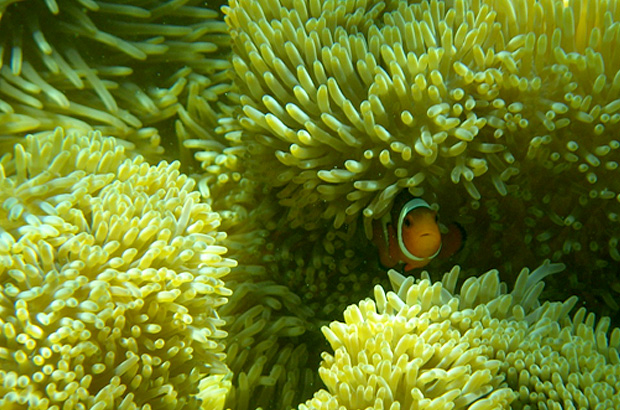Dr Joanna Murray from Cefas explains why she needs to know what species people are keeping in their fish tanks.
Since the 1930’s the marine aquarium hobby has been growing in popularity. Today over 2 million people worldwide keep marine aquaria, displaying a wide range of ornamental fish and invertebrates, including corals.
Although the real numbers of animals collected is unknown, it has been estimated that up to 30 million fish from over 1800 species, 1.5 million live stony corals, and 9–10 million other vertebrates are traded annually in an industry worth around 200–330 million USD per year.

Most of these animals are taken directly from coral reefs in tropical countries, such as Hawaii, the Philippines and Indonesia. They are then transported to hobbyists’ fish tanks around the world. The trade is only a small number of animals, compared to fishing for food for example. The ornamental fisheries however, have a high value market and could provide economic stability for low-income coastal communities as well as being an incentive to protect their local reefs.
Some ornamental fisheries already have local management and collection records in place, such as Florida. But many countries still have little information about what they are currently harvesting.
To better understand the potential economic benefits to coastal communities and encourage the sustainable use of marine resources, we need better evidence on the number and type of animals collected.
As we lacked information of detailed trade records, Dr Gordon Watson, University of Portsmouth and I set about to investigate what information we could use. Together we looked at biodiversity data from hobbyist aquaria, such as what animals are in hobbyists’ tanks, and species lists from wholesalers, including species which can currently be cultured. This first step helped us look for gaps in aquaculture developments. And then we could identify species that may require fisheries assessments and management.
Our findings
This study provided the first ever assessment of the biodiversity in the hobbyists’ tanks, as well as an up to date report of which species are currently being cultured to supply the aquarium trade.
Many of the most popular ornamental species, including clown fish, damsels, dotty backs, angelfish, gobies, sea horses, blennies and many corals, are now successfully bred (either by commercial companies or hobbyists). This indicates that aquaculture is being, or can be used, to help sustainable wild collections.
However, some other popular groups such as tangs, starfish, anemones and hermit crabs are not currently being cultured and we lack detailed information about their numbers in the wild. So they are highlighted as priority candidates for us to look at their number on local reefs where aquarium collection occurs.

Better evidence is needed
The method we developed, of using hobbyist and commercial data, to identify some key areas for fisheries assessments could be used to inform ornamental fisheries managers in the short to medium term.
But we believe that for the industry to continue, especially under growing environmental pressures, more transparent information is needed. This would include data on what species are collected and cultured by local coastal communities. All this would help better manage local stocks to help ensure more sustainable ornamental fisheries and also to help consumers be better informed about what they are buying for their fish tanks at home.
Get the report
The full report is available online and you can contact me for more information.
For more information follow us on Twitter @CefasGovUK. or sign up to email alerts from this blog.